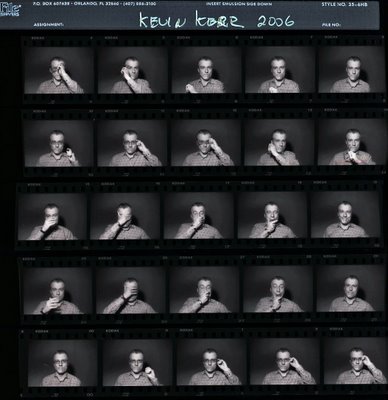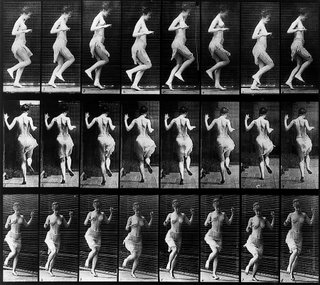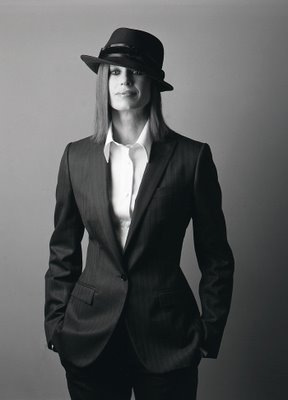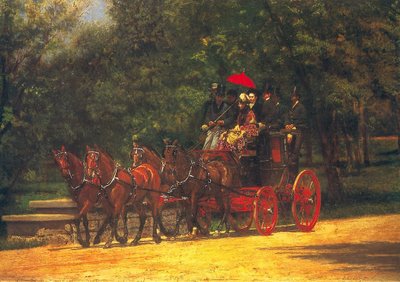
Last night at the opening of the Electric Company's Studies in Motion - The Hauntings of Eadweard Muybridge presented by the Playhouse Theatre Company, I missed Robert Chesterman very much.
During the intermission of the same play at the Frederick Wood Theatre in January 2006, I ran into red-haired, red-faced film director Robert Chesterman. A man who had been born in England and had been a TV and film pioneer at the CBC was wowed by the show. “I have seen just about everything in my life (he was 75) but I have never seen anything like this. It is fantastic.” I was just as amazed and delighted at the performance. But for the moment I had to put that aside. I saw a kind of hope in the older man that gave me an impetus to realize that there is much excitement left for me to see in my own life (I am 66). When Chesterman died the next year I remembered his excitement. I still have a bit of his hope for the new and undiscovered.

There is theatre, there is ballet, there is opera, there is film there is television. It is not often that any of these art disciplines mix or merge. Of late, most operas have excluded the traditional ballet that many productions incorporated in the 19th century. A recent production of Aida by the Vancouver Opera included some dance. One of my favourite Vancouver male dancers, Tod Woffinden was relegated to looking like an Apache Indian. The dance was terrible. I have seen many modern dance works that attempt to bring in projected video. Most of these have not satisfied me.
In Studies in Motion – The Hauntings of Eadweard Muybridge the folks at the Electric Theatre Company (actor Jonathon Young, director Kim Collier, below rigth, and playwright Kevin Kerr, above, decided to bring into their mix the choreography of Vancouver’s Crystal Pite, below, left. This was a felicitous decision and the result is a play that is dance. It is dance that is theatre. It is an amalgamation that is better than its two parts.

The play with the help of Crystal Pite’s choreography and music by Patrick Pennefather (well known in the Vancouver dance scene) somehow transported me into the 19 th century when science was an all-is-possible solution to the world’s ills. Robert Gardiner’s stark scenery of projected white lines and the human figures moving back in forth, draped and undraped, seemed all in a realistic black and white. I was watching Muybridge himself (Andrew Wheeler) perform his experiments in human and animal locomotion.
Eadweard Muybridge himself is ample proof that truth is far stranger than fiction. As an example you might consider that before the English born photographer began his motion studies he went off to take pictures in Guatemala and Panama under the name of Eduardo Santiago Muybridge. When he died in 1904 in Kingston upon Thames (where he was born) his memorial stone misspelled his name Eadweard Maybridge, and the crematorium register calls him Eudweard Muybridge!

Between his birth in 1830 and his cremation in 1904 Muybridge’s life was full of excitement, murder, a lawsuit all well covered by Kevin Kerr’s play. Perhaps the most singular event in Muybridge’s career involved a horse, a horse that should be as famous as the horses listed below. Unlike those other horses this one had a surname.
1. Bucephalus, Alexander the Great’s horse.
2. Cincinnatus, General Ulysses S. Grant’s horse.
3. Traveler, General Robert E. Lee’s horse.
4. Copenhagen, the Duke of Wellington’s horse at Waterloo.
5. Rocinante, Don Quixote’s horse.
Before Eadweard Muybridge came along, famous 19th century French painter Ernest Meissonier had his son Charles and several cuirassiers, veterans of the Napoleonic wars, galloping in his back garden. These studies in the motion of horses were for Meissonier's epic paintings of Napoleon in famous battles. The painter was obsessed with detail. Not being able to see the motion itself, Meissonier had a little railroad built in the garden and had assistants push his little railway car down a hill while a horse galloped on the side. Meissonier furiously sketched while trying to discern the pattern of the horse’s hooves, to no avail.


On June 15, 1878, on a clear and sunny day (good for photography involving slow film and slow lenses of the time) in Palo Alto, California, amid a gathering of art and sports journalists, Eadweard Muybridge photographed the first successful serial images of fast motion.
The subject of these photographs was the trotting horse, Abe Edgington, right, harnessed to a sulky ( a two-wheeled sit-down chariot-like carriage). The horse was owned by railroad builder and former governor, Leland Stanford. The images proved Stanford's theory that during a horse's running stride, there is a moment of suspension where no hooves are touching the ground.
What had begun as a topic of unresolvable debate among artists and horse enthusiasts now launched a new era in photography, and the birth of the motion picture. It also inspired artists of the time to finally and accurately depict the horse in motion. One of the most famous was Thomas Eakins’ (grandly played by Jonathon Young in Studies in Motion) painting A May Morning in the Park painted in 1879-80 as a result of careful observation of Muybridge’s work.

During the play 11 of the 12 performers manage to take all their clothes off. It is done humorously in some instances but in most the effect is scientific and clinical and should not offend anybody. I plan to return with my 11-year-old granddaughter Rebecca as I think this is a play that she will relish in years to come. There are several stand out performances. Allan Morgan is perfect and should not consider ever wanting to get in shape again. Those who will see the show will understand and snicker when I suggest Morgan never try hot potatoes. Jonathon Young had me confused for a while as he plays three roles. Two of them, as the womanizer Henry Larkyns and the other as the not-so-womanizer Thomas Eakins were superb.
And Andrew Wheeler is so good as Eadweard Muybridge that I plead that Kevin Kerr write a play very soon on Darwin. Wheeler would be the perfect Darwin. Then there is George Bernard Shaw, too.
The folks of the Playhouse Theatre Company know a good thing when it comes along. They are presenting this Electric Theatre Company production until April 18 at the Vancouver Playhouse.
Jonathan Young
Kim Collier, Jonathon Young and Kevin Kerr
Kevin Kerr
Kim Collier
Allan Morgan






